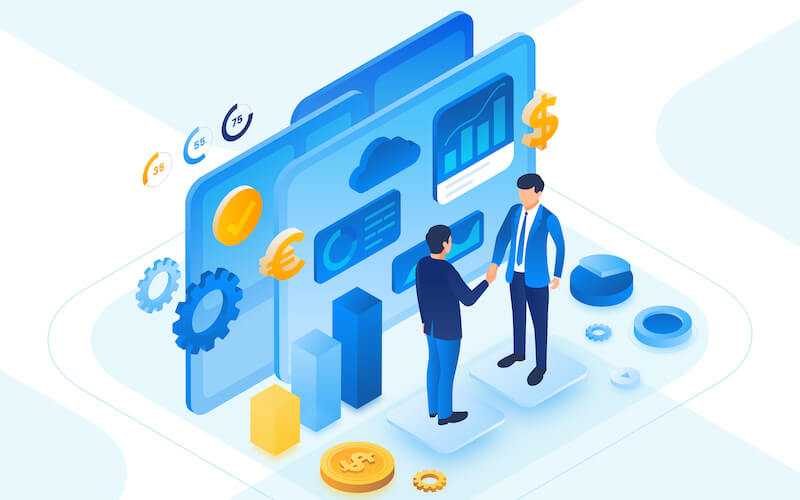
Business-to-Business (B2B) and Business-to-Client (B2C) sales have many other features that set them apart. But anyone who wants to sharpen their sales skills should know how to turn both individuals and businesses into loyal buyers.
In today’s article, we are going to highlight the main differences between B2B and B2C sales and the skills needed to succeed every time.
B2B vs. B2C – Main Differences
The most obvious difference between the two business models is the target. For B2B, the target is a company, while in the B2C world, the target is an individual.
To put it more clearly, if your business is trying to sell microchips to companies like IBM, then your relationship is a B2B one. On the flip side, if you’re selling smartphones and your customers are regular people in need of one, you are in a B2C situation.
As a result, many of the steps that lead to a successful sale are different depending on your type of situation. For instance, before you can start talking about sales in the B2B world, you have to build a relationship with the companies you’re targeting. That’s because trust needs to be established.
In B2C, the sale part doesn’t take as long, but there is more work to do on the marketing part. Marketing is important in both scenarios, but in B2B, the focus is more on positioning, while in the B2C world, it’s more about messaging.
Now, let’s see how these differences (and others) impact the sales cycle.
Finding Leads
In order to be successful in sales, you first need interested buyers. In a B2C situation, you can rely heavily on marketing and branding campaigns to get word of mouth going. This way, when someone needs a product or service like yours, they’ll find your offer and decide for themselves if your company is worth the investment.
In the B2B world, things are quite different. For once, companies must run lead generation campaigns in order to find businesses that may be interested in purchasing their product or service. Once you have a list of leads, you can start the sales cycle, which may include several steps, such as pitches, meetings, negotiations, product demos, and more.
In summary, both business models require some form of finding your niche, but with B2B, the focus is set on building a relationship and making sure it can be viable in the long term.
Marketing
From a B2C perspective, there are lots of options for marketing your brand to the world. There is traditional marketing, online marketing, and social media marketing (to name a few channels), and it’s easier to reach the ears and eyes of your target audience.
In the world of B2B, branding is equally as important, but it’s more about establishing trust and showing your leads that your products and services are worth the investment in the long term. Also, you need to be able to adjust your branding to fit your target audience and make sure your business representatives are well-versed in communication and creating connections.
Decision Making
The B2B sales cycle is overall longer than the B2C one, and this is perfectly portrayed in the decision-making process. To get a signed contract with another company, you have to jump through several hoops, meet several of their representatives, and move up the decision chain by sending proposals and making pitches.
In the case of B2C, the decision is often made by one person, and many sales have an emotional component. This is why most B2C branding campaigns target personal things such as cravings or habits.
Wrap Up
Finding leads, marketing, and decision-making are some of the steps that make the sales cycles in B2B and B2C so different. But everything starts with your target audience and how their process is designed.
Cover Image by pikisuperstar on Freepik
